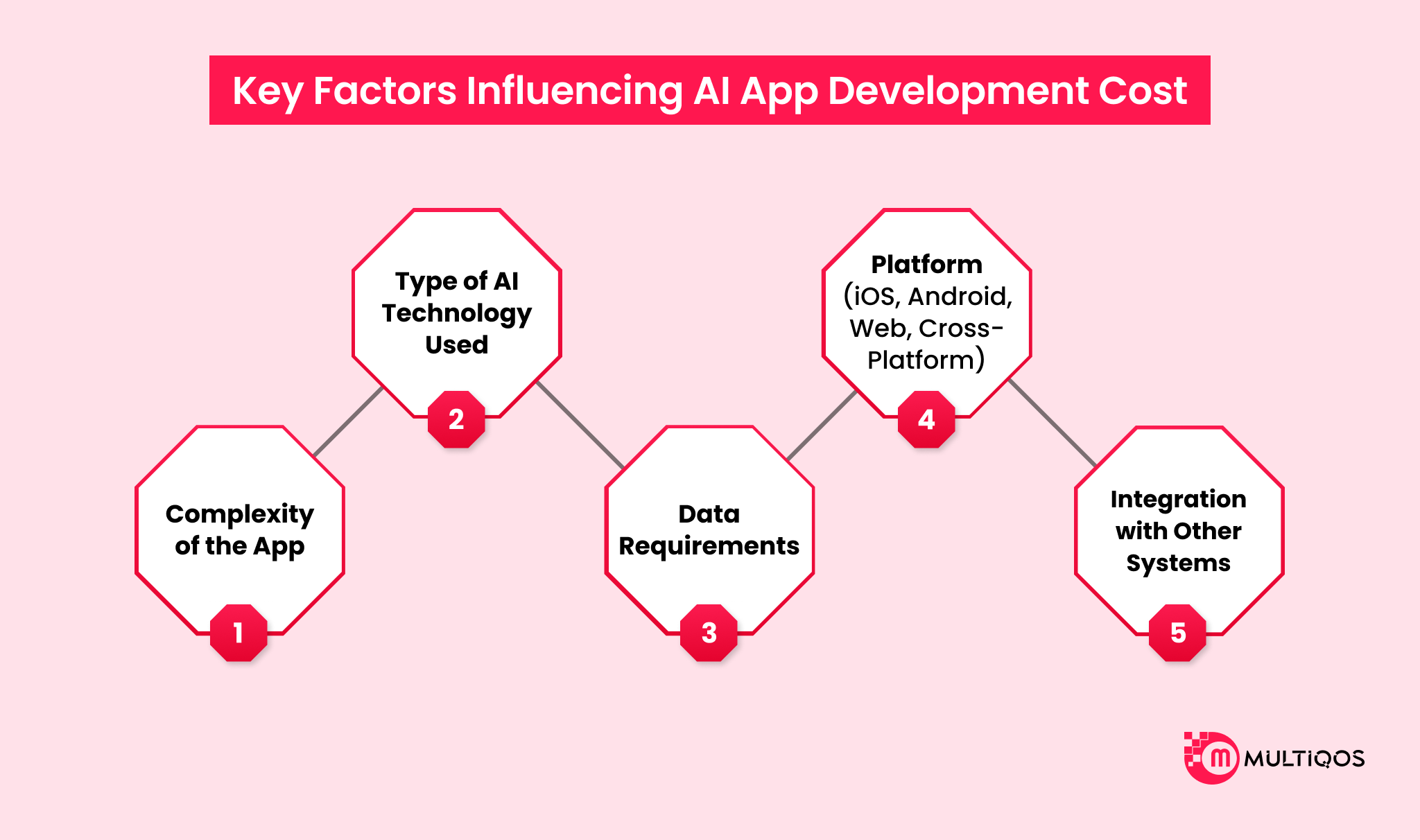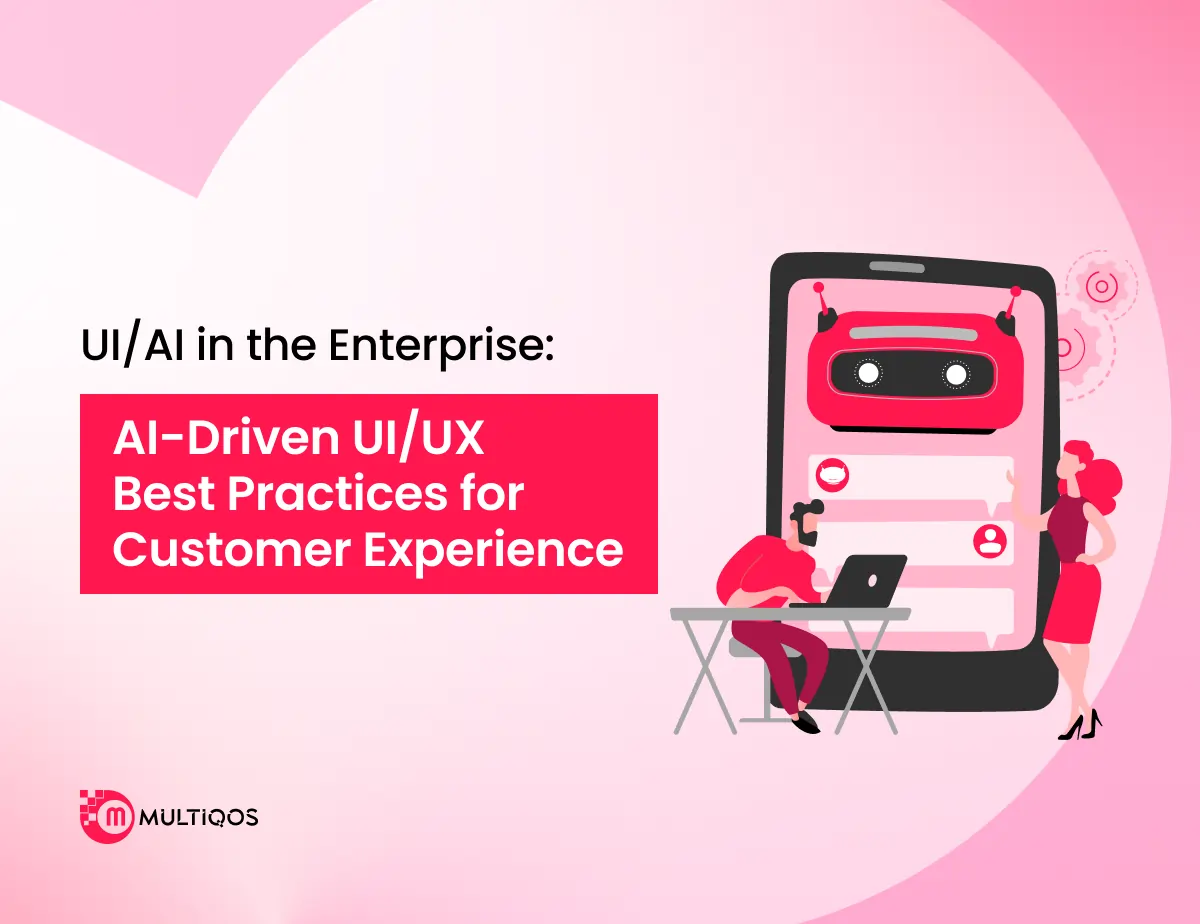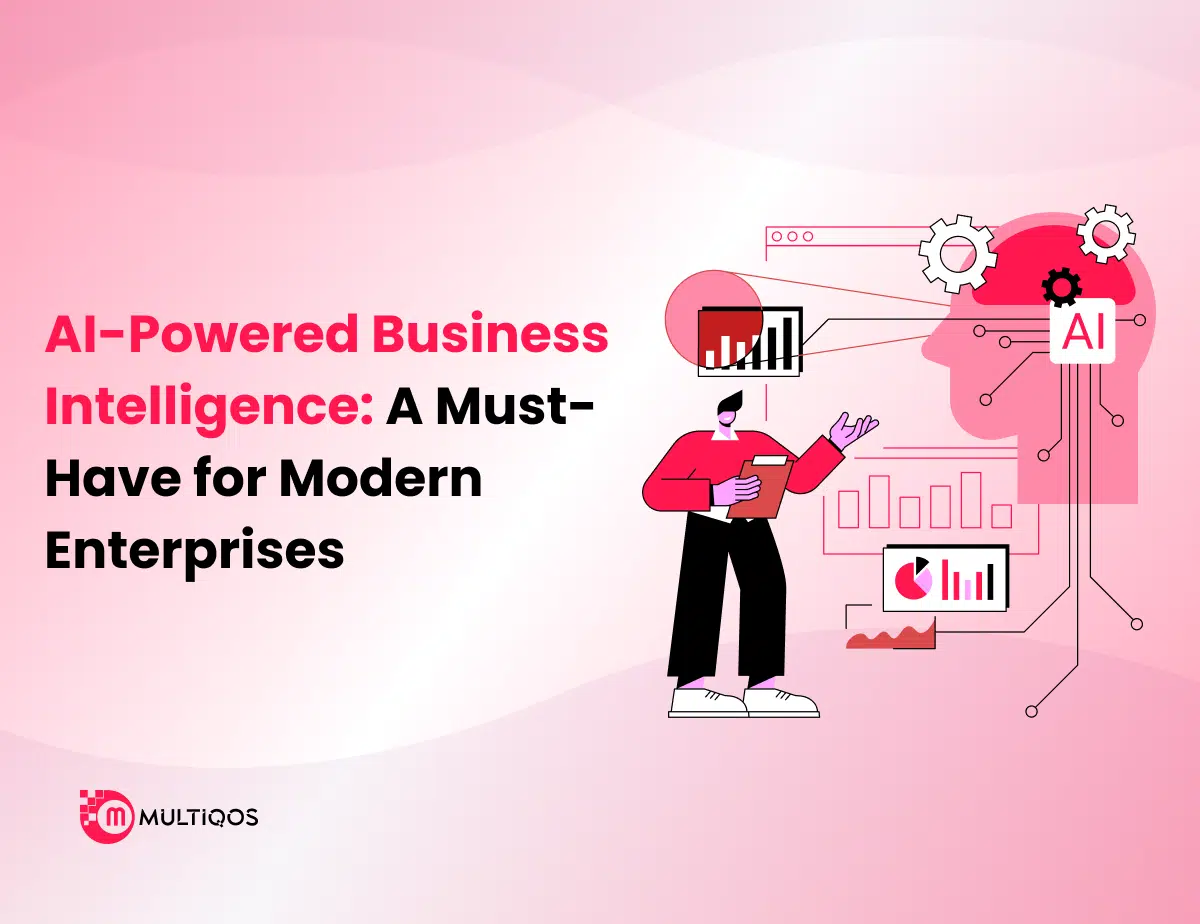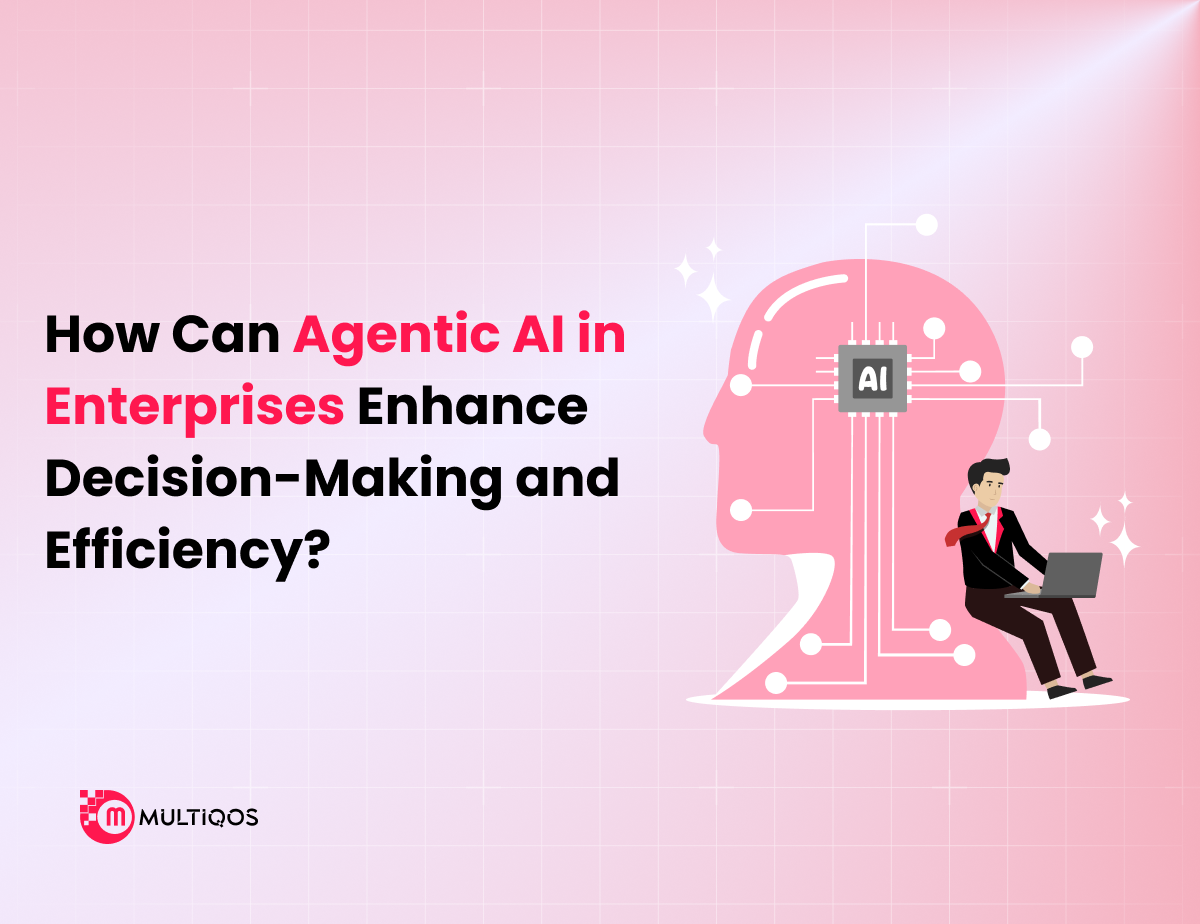
Summary :
Building an AI-powered app can be a game-changer for businesses aiming to innovate and stay competitive. However, understanding the costs involved is essential before starting your development journey.
This comprehensive guide explores the key factors that influence AI app development cost, such as the complexity of AI models, integration requirements, choice of technology stack, and the experience level of your development team.
It also highlights how geographic location and ongoing maintenance impact the overall budget. Whether you’re developing a simple AI chatbot or a sophisticated machine learning application, this guide will equip you with the knowledge to accurately estimate costs, avoid common pitfalls, and plan your investment wisely for a successful AI app launch.
Introduction
Artificial Intelligence (AI) is no longer a future concept – it is a transformative force all over the world. From individual healthcare solutions to intelligent virtual assistants and future analyses, AI-operated applications become important tools aimed at being competitive. As interest in these techniques increases, an important question often arises: What are the AI app development costs in 2025?
In this complete guide, we will break down all the things you need to know about the AI app development cost, from pricing factors and cost expenses strategies. Whether you are a startup, product manager, or managing a business, this post will surely help you plan your AI app development cost carefully and understand what prices are in today’s fast development market.
Key Factors Influencing AI App Development Cost
AI app development costs can vary greatly depending on many factors. It is necessary to understand these variables to determine the realistic budget and the timeline of the project. Here is the breakdown of the most important elements that affect pricing:
1. Complexity of the App
The more complicated your AI app, the higher the development cost. A basic chatbot or recommended engine will cost much less than a sophisticated AI solution, such as a future analysis or real-time object detection using a data view. Facilities such as Natural Language Processing (NLP), deep learning, and individual AI experiences require more time, resources, and computational power—all of which affect the AI app development costs.
2. Type of AI Technology Used
Not all AI technologies are created equal. Traditional machine learning models, neural networks, or new Generative AI solutions (such as GPT-based models or diffusion models) affect costs to a large extent. For example, Generative AI often requires advanced infrastructure and high levels of fine-tuning, resulting in increased development time and costs.
3. Data Requirements
AI apps are very dependent on the data. The model plays a crucial role in determining the quality, quantity, and type of data required for training. If your app needs to collect large datasets, clean them, and label them, or buy external datasets, these procedures can significantly increase the AI processing costs. In addition, real-time data processing or continuous learning functions add even more complexity and expenses.
4. Platform (iOS, Android, Web, Cross-Platform)
The target platform for your AI app development also affects the total cost. Developing for a single platform, such as iOS or Android, is usually less expensive than creating a cross-platform or online AI-driven enterprise solution. Cross-platform apps often require further adaptation to optimization with AI components in different environments.
5. Integration with Other Systems
If your AI app needs to be connected to the current CRM system, ERP, third-party API, or existing infrastructure, the development time and cost might be increased. Smooth and secure integration requires further backend development and possibly middleware solutions, all of which add to the total AI app development costs.
Cost Breakdown by Development Phase
The AI app development costs require a breakdown in each stage of the developmental life cycle to fully understand your financial scope. Each step plays an important role in shaping the end product, and each comes with its own value day. When you work with professional AI development services, these costs may vary depending on the project complexity, technology stack, and scope. Below is a detailed observation that you can expect to use in each step:
1. Planning and Research ($5,000 – $15,000)
Conducting market research, identifying application goals, building a clear roadmap, and choosing the right AI framework and model are the initial phases of AI app development. For complex AI solutions, this step may also include viable studies or prototypes.
Key costs include:
- Business analysis
- AI model selection strategy
- Competitive and user research
- Technical feasibility
2. UI/UX Design ($3,000 – $12,000)
It is important to design an interpretation with a seamless and intuitive interface, especially when integrating AI properties, such as Chatbots, recommended engines, or image recognition. AI-operated apps should balance technical performance with purpose.
Key costs include:
- Wireframing and prototyping
- User journey mapping
- Visual design for AI interactions
- Usability testing
3. AI Model Development & Training ($10,000 – $100,000+)
This is often the most resource-intensive phase. Depending on whether you use pre-informed models, open source tools, or create a customized model from scratch, the AI app development costs can vary widely.
Key costs include:
- Data collection and labeling
- Model training and tuning
- Infrastructure (e.g., GPUs, cloud services)
- Integrating AI models into your app
4. Core App Development ($20,000 – $80,000)
This involves the actual coding of the application: frontend, Backend, API, and AI function integration. The cost of the app depends on complexity, platform (iOS, Android, web), and whether you are building a native or cross-platform app.
Key costs include:
- Backend architecture
- Frontend development
- API and AI service integration
- Security implementation
5. Testing and QA ($5,000 – $15,000)
The AI app testing is more complex than standard applications due to the unexpected behavior of the AI model. Rigorous tests ensure that both AI and non-AI function as intended.
Key costs include:
- Functional testing
- Model accuracy validation
- Edge-case and performance testing
- Cross-platform/device testing
6. Deployment and Launch ($3,000 – $10,000)
When the test is complete, the app is prepared for launch on relevant platforms. This phase also includes setting up analytics, CI/CD pipelines, and early user functions.
Key costs include:
- App Store/Play Store setup
- Cloud environment setup
- Monitoring tools and analytics
- Initial bug fixes and updates
Wrapping Up
If you want to make an app, it’s best to know how much an AI app development costs before initiating your journey. The price can change a lot depending on how tricky the app is, what kind of tools you’ll use, and how skilled the people working on it are. Getting your info ready and keeping track of money also play a role.
Whether it’s just a basic chat tool or something more complex, having the right folks helping you makes a big difference. When you plan to hire AI developers for your project, try to find people who have done this kind of thing before, know the area you’re working in, and are easy to work with.
FAQs
The price can really vary. Usually, it starts around $20,000 but can go much higher if the app is complicated or needs special features. Simple apps are cheaper. Also, the better the developers, the more it might cost.
Things that matter include:
- How hard is it to make the app
- How much information does the app need to work with
- What devices or systems it should work on (like phones or computers)
- If it needs to connect with other programs
- How easy and nice it is to use
- Rules or security stuff, it has to follow
You can:
- Look on freelance sites like Upwork or Toptal
- Hire companies that make apps
- Use recruiting services that know tech jobs
- Ask friends or search on LinkedIn
Just pick someone who knows what they’re doing and has done similar work before.
Post-launch costs may include:
- Model updates and retraining
- Cloud hosting and computing (especially for large models)
- App maintenance and bug fixes
- Security updates
- Scaling infrastructure as the user base grows
These can account for 15–25% of the initial development cost annually.
Get In Touch







